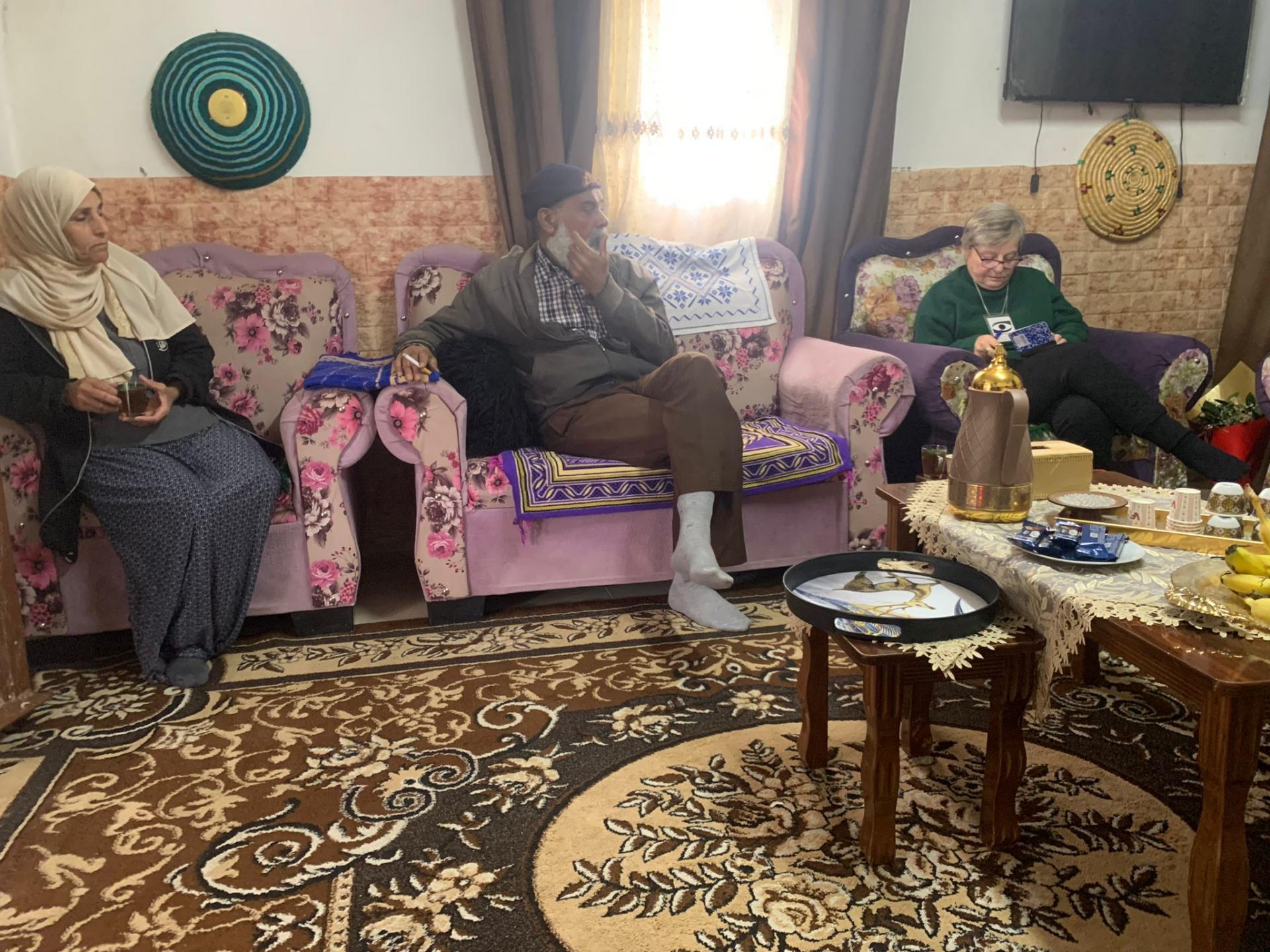South Hebron Hills - settler takeover, checkpoints and great difficulty in life
The shift was coordinated with our friend Farhan from A-Simia and we started with a trip to Meitar to collect dozens of sweatshirts to hand out in this cold winter.
In our past, near the areas of the communities we visited and knew, we always mention the names of the people, women and children who were close to our hearts.
This is how we passed by Zanuta, the village from which its 250 inhabitants were expelled, about two months ago. It was easy to spot the shepherd dressed in orange, with his flock of sheep. On the other hand, it was hard to see that the area near Zanuta's school, which the sheep grazed in front of, belonged to the family that was deported.
Further on, on Route 60, a photo of the entrance and exit to Samu’, a town south of Hebron, with about 20,000 inhabitants.
The rest of the entrances and exits have been blocked since October 7th, as we reported in recent months.
Near Simia, we noticed Farhan Salamin coming from Samu’ in a small private car to greet us. His wife, Myser, and he happily welcome us in their beautiful home. His parents and generations before lived in a nearby cave, and in 1970 the house where his family lives today was built.
In Samu’, which is opposite A-Simia, Farhan earns a living from transportation as a taxi driver. He drives the residents of the area from village to village. Usually, another vehicle is waiting for them at the entrance because it is not possible to enter due to the many barriers.
He says that there has been a drastic deterioration since the war. The school, which he founded several years ago in Simia, is not active. His 7-year-old grandson, who lives in their house, was engrossed in a cell phone. Sometimes there are Zoom lessons, not regularly. We have already heard the reason in other visits to other villages: the teachers cannot come from Dura, Yatta and Samu’ to teach. Again, everything is blocked.
I asked what he would like to tell about his family life recently. A son who lives in Ramallah with his family, and works as a clerk in the Palestinian Authority, earns about half of his salary in the days before the war. We were not surprised as we had been told the same by others, who had jobs in the Palestinian Authority.
Farhan told us about an event that took place two days before our visit:
When he drove by the Mekorot water pool, which is about a hundred meters from his house, on the other side of Highway 60, he was stopped by two settlers armed with long weapons. One of them got out of the car they arrived with, tried to stop Farhan and demanded that he hand over the keys to his car, with which he supports the family. The settler who remained in their vehicle threatened him with the weapon and the barrel was pointed at Farhan.
Without hesitating, Farhan quickly fled the scene in the car to his home. By all accounts a difficult event.
Farhan has a house that he started building in A-Simia, in the land belonging to his family. Two years ago, they received letters to stop construction. There are no building permits in A-Samia. Farhan went to court, but the issue has been pending for years.
Another shift that again tells about settlers taking over, roadblocks and great difficulty in life.

